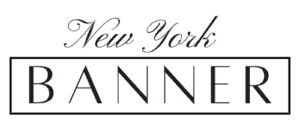You might think that it’s too good to be true to lose weight while still eating burgers, steak, cheese, and bacon. It’s true that high-protein and low-carb plans like Atkins and the Zone can work. However, you have to weigh the pros and cons first of each diet before you decide to try it.
How Much Protein Is Needed?
Women need 50 grams of protein a day while it’s 60 grams for men. When you follow a high-protein diet, it’s more than that. You can derive these extra proteins from various sources like beans, whole grains, eggs, cheese, seafood, nut, meat, or vegetarian sources like soy. Such diets often restrict the intake of grains, cereals, fruits, and also vegetables.
How Do High-Protein Diets Work?
When you reduce your carbohydrate intake, you can lose weight quickly because you lose water. With no extra carbs to burn, your body burns more fats for fuel instead. This may lead to ketosis, which makes weight loss easier to achieve because you become less hungry. In some people, ketosis may cause irritability, bad breath, temporary headaches, nausea, and sleeping issues.
Are High-Protein Diets Safe for Those Who Like to Lose Weight?
For many people, following a high-protein diet won’t hurt for as long as it is followed only for a short time. As mentioned earlier these diets can help you with weight loss by making you feel full for a longer time. However, when you follow a high-protein diet for the long term, it can have several adverse reactions.
Some high-protein diets limit carbohydrate intake too much that you may not be able to get enough fiber and other nutrients. This may cause several problems like bad breath, constipation, and headaches.
On the other hand, some high-protein diets allow consuming red meat, processed meats, and other foods that are high in saturated fat. These can increase your risk of heart disease and your bad cholesterol level. A high-protein diet may also cause problems in people with kidney disease. This is so because the body may not be able to dispose of all the waste products of protein.
What to Do
If you want to stick to a high-protein diet, make sure that you choose healthier sources of protein such as beans, nuts, lean beef, pork, lean chicken with no skin, fish, soy protein, and low-fat dairy products. It’s also crucial to choose carefully the quality of carbohydrates you consume. Choose those that are high in fiber and other nutrients, like whole grains, fruits, and vegetables.
People who have dietary restrictions must continue to exclude foods that are not suitable for their condition. For example, lactose-intolerant people must not use milk products to increase their protein consumption. In general, a person who follows a high-protein diet must avoid the following food items: highly processed foods, products that have refined sugar like candies, sodas, and baked goods, and foods that are being marketed as diet products but excessively contain artificial sweeteners.
You have to consult your healthcare provider first before you start on your high-protein diet. This is even more important if you have kidney disease, diabetes, or any other long-lasting illness. Remember that the best eating pattern is one that you can stick to for good.
Some Dos and Don’ts When Eating Protein
Before you start your chosen high-protein diet, it would be better for you to be familiar first with the do’s and don’ts of it.
Don’t eat all of it in one sitting. Remember that our bodies do not store protein like we store carbohydrates and fat. This means that your massive slice of meat tonight will be covered by your run tomorrow. Make sure that you stick to 20 to 30 grams of protein per meal.
Do eat a protein snack within 20 to 30 minutes after you do a tough workout. You must have fuel to rebuild and grow muscles after you ripped up some muscle fibers.
Don’t be a paleo addict and start pushing away meat if you’re not getting enough fruits and vegetables from your diet. If you don’t do this, you will miss out on major vitamins and minerals.
Do make sure to get your protein from whole food sources such as chicken, eggs, dairy, nuts, red meat, and fish. If you want to boost your protein intake, choose whey protein which is the easiest to digest and be used by the body.
Don’t rely only on plant-based protein sources. You have to get your protein from a variety of sources for you to achieve your goals.
Don’t eat too many protein bars on top of your meals if you’re aiming for weight loss since they contain a lot of calories. They’ll make it easy for you to gain weight.
How to Eat Following the High-Protein Diet
You can find many ways to integrate protein into your diet even for those who have dietary restrictions. People who are vegan or vegetarian, for example, or those who are lactose intolerant may still follow the high-protein diet. The following steps may help a person to start a high-protein diet:
1) find out the individual protein needs based on the body weight
2) creating meal plans for the entire week
3) finding and using top-quality protein sources
4) integrating 25 to 30 grams of protein in every meal
5) writing a food journal to keep track of the protein quantity and sources used
6) consuming well-balanced meals
7) make sure to include both animal and plant sources of protein in your diet
Short-term studies showed that a high-protein diet can help with weight loss, but there is no research yet on the effects of a high-protein diet on a person’s general health. Most people can safely follow a high-protein diet but only for a short period. People with any medical condition must consult a physician first before they decide to follow any high-protein diet.
